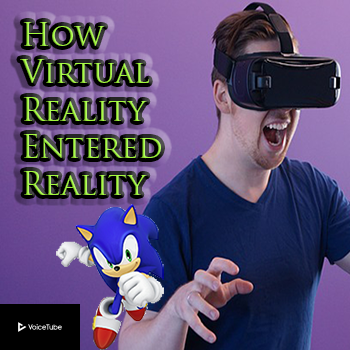Is the world ready for VR yet?
From NASA, to Nintendo, to Oculus
A look at some of history’s most interesting VR devices.
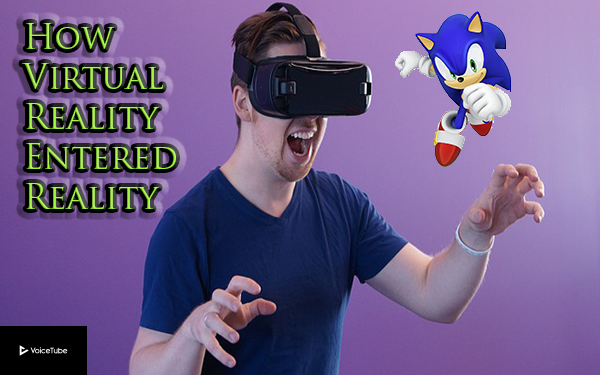
Introduction
Have you ever wondered where virtual reality (VR) came from? Have you ever tried to imagine what the first VR headset might have looked like? If so, you’ve come to the right place. Today’s blog will explore some of the most interesting and bizarre attempts at creating an authentic(1) VR experience. From NASA, to Nintendo, to Oculus, it’s all here.
What is VR?
I am sure you have an idea of what VR is. You probably imagine someone putting on a goofy looking headset and waving their arms around like a crazy person. But if I asked you to define VR, could you do it?
The term VR was coined in the 1980s by Jaron Lanier, who founded a company called VPL Research and began to develop apparatus(2) for VR, like gloves and goggles.
Let’s toss out the dictionary definition for a moment and break it down. VR creates sights and sounds—and sometimes even other senses—via imagery and hardware that is usually computer-generated. These virtual worlds must also be interactive. Therefore, something like a 3D movie cannot truly be considered VR, because while you can see it, you cannot touch it or interact with it in any way.
The Sensorama
Morton Heilig was way ahead of his time in 1956 when he began to develop and patent(3) the technology for the Sensorama. This impressive and bulky machine used 3D motion pictures and stereo sound. On top of that, Heilig even found a way to wrap touch and smell into the user experience.
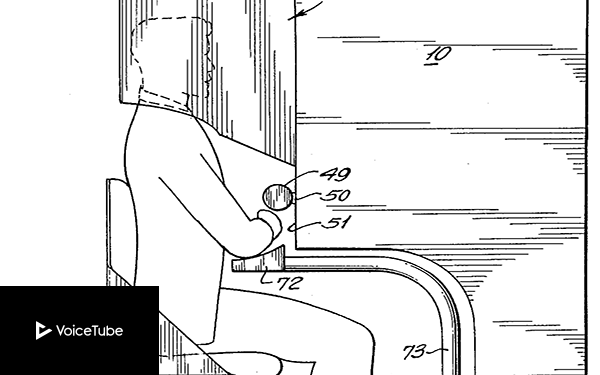
The user would sit down in a seat, choose a 3D picture, then put their face inside a giant box-like area with a screen. One of the motion pictures featured a motorcycle ride in New York City. At certain moments, the chair would vibrate and fans would blow air on the user to simulate wind.
Perhaps most interestingly, each motion picture contained two different smells that would get released at specific moments in the video. For example, when a truck rode by and emitted(4) exhaust, a chemical-made odor would be released, allowing the user to feel more immersed in the setting.
To get a closer look at the Sensorama, check out this unique interview where Heilig is actually playing with his own creation.
NASA’s Virtual Interface Environment Workstation System (VIEW)
Working at NASA must be a lot of fun. They get to tinker with some of the coolest, most new-fangled hardware out there. In the 1980s, NASA developed the VIEW system, which not only came with a headset, but also brought the iconic(4) gloves commonly associated with VR into the picture for the first time.

More affordable LCD TV screens and computer graphics machines allowed NASA to use powerful computer-generated graphics or real environments to simulate space.
The “dataglove” could detect the bending of the fingers, which allowed users to pick up and interact with certain objects in the virtual world. Supposedly, NASA scientists particularly enjoyed pointing their index fingers, which allowed them to fly in the indicated direction.
Sega VR
Sega and Nintendo were locked in a console war between the Super Nintendo and the Sega Genesis in the early 90s. While both companies had to innovate and discover the “next big thing,” Sega was the underdog and really tried to push a lot of new hardware and extras for their game consoles.
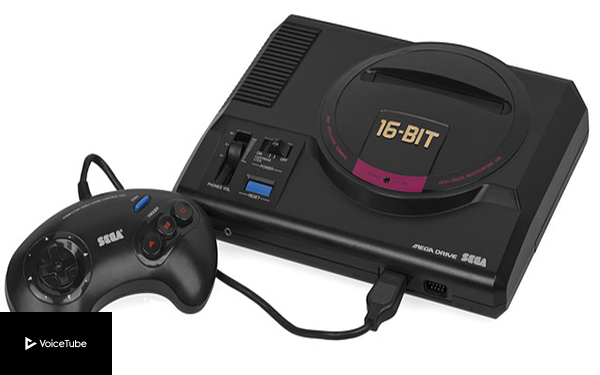
With VR turning into a buzzword(5), Sega began developing their own VR headset in 1991. However, one big problem was head tracking. Head tracking allows the headset to register the head’s movement in a 360-degree VR environment in real-time. Nevertheless, Sega got the requisite(6) technology from a tech company called Ono-Sendai, which used multiple sensors, water and gas, and even relied on the Earth’s magnetic field!
However, this all fell apart in 1993, the very year it was supposed to be released. Most of the children who tested the device got headaches and felt sick. Sega had no choice but to cut their losses and ditch the VR project.
Nintendo Virtual Boy
Nintendo had plans for a VR headset of their own. The Nintendo Virtual Boy was released in 1995, and it was advertised as the first handheld game console that had full 3D capabilities. This might sound impressive, but it was a giant flop(7),and Nintendo tried to sweep away(8) all evidence of its existence after they stopped supporting the odd device within a year of its release.
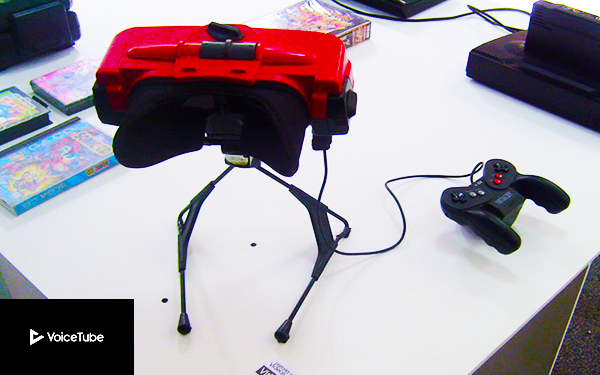
Why was the Virtual Boy a massive failure? For one thing, the games only had two colors, red and black. Red LEDs were cheap and commonly used in printers at the time, while other technologies like LCD were still too expensive. To make matters worse, the Virtual Boy was awkward to use. The design was strange, and people complained that it was uncomfortable to play and that the headset kept falling off.
Enter the Oculus Rift
The VR craze of the 90s dissipated(9) and tossed the technology back into the realm of science fiction. Then, almost two decades later, the Oculus Rift raised millions of dollars on Kickstarter and was bought by Facebook for US$2 billion in 2014.
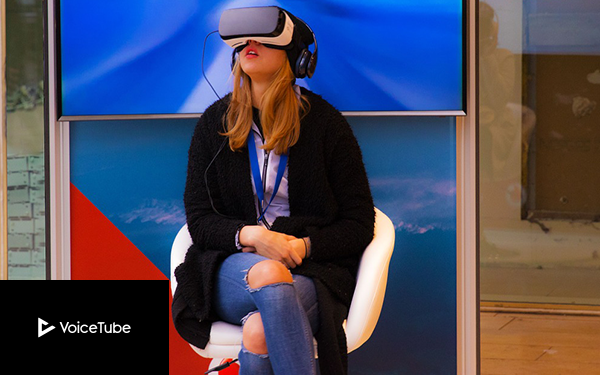
Despite having impressive specs and arousing tons of curiosity, VR hasn’t taken off like the developers had hoped. The Oculus Rift has wowed users, and Facebook has the money to keep supporting the device, but some people claim that VR is still too niche or too infantile to compete with traditional video games. The classic gaming experience allows players to play for longer periods of time as well as offering a more social experience. It’s hard to call the Oculus a failure, but it isn’t quite the smashing success story that VR enthusiasts hoped for either.
Conclusion
Despite the many hiccups and technological shortcomings, VR has become integrated(10) into the video game universe. Other companies like HTC, Samsung, Sony, and Valve all have devices on the market. Whether or not VR will remain viable or develop into a more robust market, it’s too early to tell.
I would like to leave you with just a few of the many possible uses of VR outside of gaming.
Museums: Some museums are collaborating with software developers to make their collections available on VR.
Putting together crime scenes: Traditionally, judges have relied on 2D photos, but VR may allow for crime scenes to be rendered in full 3D.
Military: VR can ready soldiers for combat via combat simulations, and soldiers can use tactical equipment created in 3D environments.
Healthcare: Healthcare professionals have been some of the first people to adopt VR. Doctors can go through entire surgeries as well as practice techniques without posing any real danger to patients.
Education: New technology has allowed for virtual field trips. Now students have the ability to explore the world while the teacher directs the tour on a tablet device. The use of VR in education should continue to evolve pretty quickly.
How the inventor of Mario designs a game
Vocabulary
1. authentic (adj.)
Def. known to be real and what somebody claims it is and not a copy
Ex. Taiwan is famous for having authentic oolong tea.
2. apparatus (n.)
Def. the tools or other pieces of equipment that are needed for a particular activity or task
Ex. This strange apparatus supposedly enhances the VR experience.
3. patent (v.)
Def. an official right to be the only person to make, use, or sell a product or an invention; a document that proves this
Ex. You should patent your new invention so nobody tries to steal it.
4. emit (v.)
Def. to send out something such as light, heat, sound, gas, etc.
Ex. Too much CO2 is being emitted into the atmosphere, which is one of the main contributors to global warming.
5. iconic (adj.)
Def. being a famous person or thing that people admire and see as a symbol of a particular idea, way of life, etc.
Ex. Mickey Mouse is Disney’s most iconic character.
6. buzzword (n.)
Def. a word or phrase, especially one connected with a particular subject, that has become fashionable and popular and is used a lot in newspapers, etc.
Ex. Gluten free has become a big buzzword in the last decade.
7. requisite (adj.)
Def. necessary for a particular purpose
Ex. You must have the requisite documents ready before the job interview.
8. flop (n.)
Def. to be a complete failure
Ex. His idea to have a baby crawl around with a mop attached to their baby clothes was a total flop.
9. sweep away (phr.)
Def. to get rid of something completely
Ex. The boss tried hard to sweep away all his past mistakes, instead blaming his employees.
10. dissipate (v.)
Def. to gradually become or make something become weaker until it disappears
Ex. My interest in movies dissipated after I was forced to watch every single Marvel movie.
11. integrate (v.)
Def. to combine two or more things so that they work together; to combine with something else in this way; to combine two or more things to form a whole.
Ex. The chef wanted to integrate multiple types of cuisine into his menu.
Photos
vr-virtual-reality-man-technology by capondesign
astronaut-space-shuttle-discovery by WikiImages
Video-game-console-video-game-play by WikimediaImages
berlin-oculus-rift-3d by beejees
Sources
https://www.fi.edu/virtual-reality/history-of-virtual-reality
https://www.vrs.org.uk/virtual-reality/history.html
https://www.vrs.org.uk/virtual-reality/history.html
http://warrenrobinett.com/nasa/index.html
https://www.goliath.com/tech/12-exciting-vr-applications-other-than-gaming/
